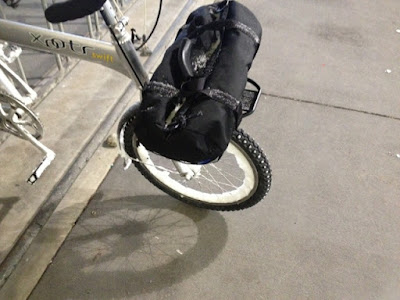Dude, those are some SICK white Deep-Vs.
Two: Your breath is full of water vapor that is above the freezing point, and said vapor is always being blown out in a small cloud in front of your face, and you are riding into that cloud at all times. Thus, if -- like me -- you have a particularly Cro-Magnonesque eyebrow (I'm saving up for the second one), said water vapor will collect there and re-freeze in a lovely ice-curtain. Heaven help you if you have curly eyelashes to go with that unibrow, because your eyes are gonna freeze shut. I think I get the whole "ski goggle" thing now.
Three: If you have to bust through a snowdrift, do so with great velocity and vigor. If you approach with any trepidation, you're just going to ride into it, flail to an awkward stop, and fall over. That's just humiliating. However, if you hit that sucker at ramming speed, one of two things will happen: Either you'll break through in a triumphant cloud of powder, or the bike will stop dead and you'll fly over the handlebars. Either way, passers-by will cheer... and isn't that the point of winter riding?





